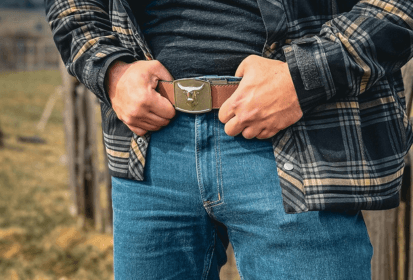Encounter with a Bear: How to React and Survive
Coming face-to-face with a bear in the wild is no longer an unusual event—especially in areas like the Beskydy and Jeseníky mountains. Do you know what to do if it happens? How to behave to reduce the risk of an attack? And how to recognize when a bear encounter turns serious? This practical guide can help you stay safe in a crisis situation.
How to Behave During a Bear Encounter
Most bears will avoid humans if given the chance. Attacks usually occur when a bear is startled or feels threatened—predatory attacks are extremely rare. Here’s how to respond if you encounter a bear in the wild:
- Stay calm and do not panic.
- Face the bear but avoid direct eye contact.
- Speak in a calm, low voice.
- Raise your arms to appear larger.
- Do not run—this could trigger a chase.
- Back away slowly and without sudden movements.
- If you're in a group, stay close together.
- If the bear hasn’t noticed you yet, quietly retreat.

Brown bear – a predator that deceives. Strong, fast, and surprisingly quiet inhabitant of the mountains.
What to Do During a Bear Attack
If a bear charges or attacks, fighting back is not recommended—unless you’re carrying bear spray. Here’s how to use the bear spray effectively:
- Stand still and slowly remove the spray from its holster.
- Aim steadily without sudden motions.
- When the bear is about 4–6 meters (13–20 feet) away, press the trigger.
- Always spray downwind—make sure the wind carries the spray toward the bear.
- One second of exposure is usually enough.
- Do not use regular pepper spray for people or animals—it can make the situation worse.
TIP: Learn more in our article “Bear Spray: The Last Line of Defense in the Wilderness.”
If the bear makes contact and nothing else helps, lie flat on your stomach, cover your neck and head with your arms, and play dead. Wearing several layers of clothing can help reduce injuries.
How to Identify the Type of Attack
Most bear attacks are defensive, not predatory. Understanding the difference is crucial:
🛡️ Defensive Attack
- The bear stands on its hind legs to appear larger.
- It makes warning noises—snorting, growling, or clacking.
- It may bluff charge without making contact.
- These attacks usually happen when cubs are nearby or the bear is startled.
Note: A bear standing on its hind legs doesn’t always mean it’s about to attack—it could just be trying to get a better look.
⚠️ Predatory Attack
- The bear watches you silently or circles you.
- It shows no signs of fear.
- It waits and doesn’t attack immediately.
- It may approach without warning.
- The attack is targeted, silent, and serious—the bear sees you as prey.

Cute to look at, but a warning sign. When you see a baby, the mother is not far away – and she definitely won't be cute.
How to Prevent a Bear Encounter
Avoiding a confrontation is always the best option. Here’s how:
- Make noise—use a bell on your pack or talk loudly.
- Don’t move silently through dense vegetation.
- Avoid hiking with dogs in bear territory.
- Stick to marked trails and travel in groups.
- Respect trail closures and warning signs.
- Avoid using scented products.
- Carry food in its original packaging and avoid overpacking.
- Steer clear of animal carcasses.
- Watch for bear signs like droppings, tracks, or clawed trees—and change your route if needed.
Follow Local Warnings and Updates
At the end of March 2025, there was a bear attack near the Šútovo Waterfall in the Malá Fatra National Park area in Slovakia. A recommendation was subsequently issued to limit public movement in the area.
Follow the websites of the Malá Fatra National Park Administration and the Czech and Slovak Ministries of the Environment – updates about bear sightings or attacks may be found there.
📌 Did you know…?
🐻 Quick overview: what you should know about bears
- The brown bear lives in the Czech Republic and Slovakia – a subspecies of the brown bear
- Males can weigh up to 300 kg, females about 100 kg less
- Despite their size, they are fast runners, excellent swimmers, and tree climbers
- Their diet is 60–80% plant-based (fruits, mushrooms)
- They have strong claws (up to 10 cm), capable of killing large livestock
- Synanthropic individuals learn to scavenge through containers and lose their shyness
- Bears are solitary and have large territories
- Their hibernation is not true – they can wake up during it
- The most common cause of attacks is the protection of young
- Reproduction is slow, which is why they are an endangered species in Europe
Final Thoughts
Bear encounters may be more common today, but actual attacks on humans remain rare. Still, it pays to be prepared. If there’s one rule to remember, it’s this: don’t panic. Stay calm—even when that’s easier said than done. In most cases, staying composed makes all the difference.
Readers are further interested

































































































































